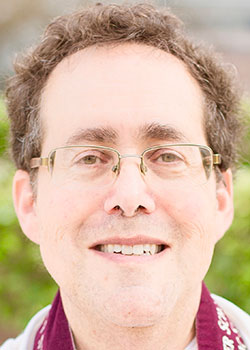About six weeks ago, my daughter was married. As a rabbi, I have performed hundreds of these ceremonies and they are always beautiful and uplifting. The poignancy of the couples’ love, and the extraordinary miracle of jubilant voices of bride and groom resounding, always make me cry. But my job as rabbi is to officiate and be present for others, so I do my best to keep these powerful upwelling emotions in check.
Not so at my Shira’s wedding. From start to finish, I found myself enveloped in a cloud of emotion so overwhelming that my mind stopped its normal functioning. Under her chuppah, I was so beclouded that I mixed up the order of the ceremony (after over 30 years in the rabbinate!). I was so captivated that during the father-daughter dance, we just hugged each other and wept in the center of the ballroom. My love for my daughter became my all. For that moment, there was simply nothing else.
A week later, my 93-year-old father fell and broke both his legs. In the hospital, it quickly became clear that he would never regain his vitality and his life began to slip away. We rushed to his side as his awareness started to wane. Surrounding his deathbed, his children and grandchildren entered the misty cloud of his mortality. The fleeting nature of time made the moments glisten, commanding our attention. In the fog of his rhythmic breathing and moments of awareness, we became fully present. We took turns holding his hands.
I had previously spent hours in my father’s company — sometimes bored, my attention wandering, or making small talk over yet another deli meal. But in those final hours, we strained to attend to him with everything we had. We were totally there — effortlessly, desperately, tenderly. As my father transitioned out of this world, we were sheltered in the shade of his courage, his concern for us, and the rawness of the moment’s emotions.
There are moments in life so sacred that it’s as if a cloud descends and displaces our excuses and indifference, when our experience outsrips our words and our feelings penetrate far beyond the limits of our comprehension. Within that swirling haze, dispassionate analysis retreats and only pure presence remains. In the unvarnished joy of a daughter’s wedding, or the breathless attendance to a father’s dying, these clouded moments dull our thinking minds while peeling back the foreskins of our calloused hearts. Such moments are so real and so raw that they can only be witnessed, not described.
One such moment occurs in this week’s Torah portion when God’s presence enters the Tent of Meeting in the form of, yes, a cloud.
Moses and the Israelites have built an elaborate and beautiful set of structures in which Jewish values could be enacted, where priests and Levites could process offerings from the people and, in burning or waving them, renew the popular sense of God’s intimacy and achieve atonement. Threads of vibrant blue, purple, red and gold created pulsing tapestries that could hold the diverse emotions of the pilgrims and penitents.
But God was not in the tent. The sharp focus on weaves and altars and gold surfaces so captured the attention that it occluded the inner eye. That inner vision needed a veil to diminish the impact of the world on our senses. It needed a cloud.
And in Exodus 40:34, the people got one.
Then a cloud covered the Tent of Meeting, and the glory of the Lord filled the tabernacle. Moses was not able to enter into the Tent of Meeting, because the cloud abode on it, and the glory of the Lord filled the tabernacle.
Some things we see with our eyes wide open. But the really important things we only see with our eyes shut. The presence of the cloud allowed Moses to focus on the divine, rather than be captive to the spellbinding colors and contours of the fabrics and the metal. It was the shimmering fog that let Moses intuit what can only be felt, beyond words or concepts, a presence that can only be lived.
So it is with a daughter’s nuptials or a father’s passing. Blinded by externals, we can get lost in budgets, menus, guest lists, correspondence, obituaries, or a thousand other details. But a cloud can shift the light and force our vision into a deep dive of feeling and experience. And in that cloud, we encounter what is truly divine.

